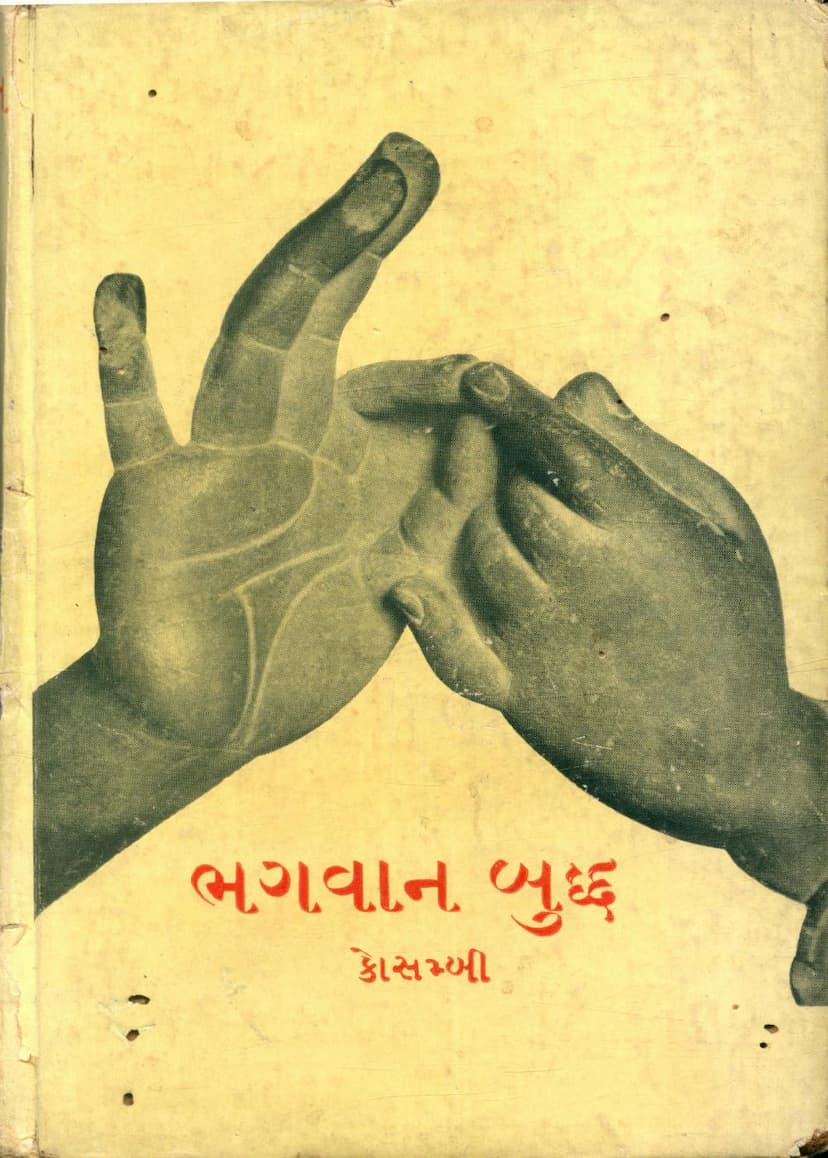Bhagwan Buddha
Added to library: September 1, 2025

Summary
This is a comprehensive summary of the book "Bhagwan Buddha" by Dharmanand Kosambi and Gopalrav Kulkarni, published by N M Tripathi P L.
The book is a translation from Marathi to Gujarati. It delves into the life, teachings, and historical context of Lord Buddha.
Key themes and aspects covered in the book:
- The Tripitaka: The book begins by explaining the three main divisions of the Tripitaka (Sutta Pitaka, Vinaya Pitaka, and Abhidhamma Pitaka) and their contents. It details the five major divisions of the Sutta Pitaka (Dighanikaya, Majjhimanikaya, Samyuttanikaya, Anguttaranikaya, Khuddakanikaya) and the fifteen sections within the Khuddakanikaya. It also outlines the five divisions of the Vinaya Pitaka and the seven chapters of the Abhidhamma Pitaka.
- The Pali Language and Atthakatha: The text discusses the origin of the Pali language and the Atthakatha (commentaries), explaining how they were developed and their significance in understanding the Buddha's teachings.
- The Early Buddhist Councils: It touches upon the first council held in Rajagriha after the Buddha's parinirvana and the subsequent attempts to compile his teachings.
- The Nine Angas of Buddha's Teachings: The book explains the nine divisions or categories of the Buddha's discourses, such as Sutta, Geya, Veyyakarana, Gatha, Udana, Itivuttaka, Jataka, Abhutadhamma, and Vedalla. It provides insights into their meaning and evolution.
- Historical Context of Buddha's Time: The text extensively describes the political and social landscape of ancient India during the Buddha's era, mentioning the sixteen Mahajanapadas (large territorial states) and the prevailing political systems, which were transitioning from Janapadas to monarchical states. It highlights the prominence of Magadha and Kosala.
- Religious and Philosophical Landscape: The book details the various religious and philosophical schools of thought prevalent during the Buddha's time, including the ascetics (Shramanas) and Brahmins. It discusses their practices, beliefs, and debates, including the concept of "Atman" (soul) and the prevailing views on it, contrasting them with the Buddha's teachings.
- The Buddha's Life and Teachings: A significant portion of the book is dedicated to the life of Gautama Buddha, from his birth as a Bodhisattva, his renunciation, his search for enlightenment, his ascetic practices, and finally his attainment of Buddhahood.
- Tapascharya (Asceticism): It elaborates on the extreme ascetic practices undertaken by Gautama Buddha and other ascetics of his time, citing examples of severe self-mortification. It then explains why Buddha eventually abandoned these practices, finding them ineffective for achieving enlightenment.
- The Middle Path: The book emphasizes the Buddha's discovery of the Middle Path, which avoids extreme asceticism and sensual indulgence, as the key to liberation.
- The Buddha's Discourse on Karma: It discusses the concept of Karma and how actions (karma) lead to consequences, shaping one's present and future lives. It contrasts the Buddha's understanding of karma with other contemporary philosophies.
- The Sangha: The establishment and organization of the Buddhist monastic community (Sangha) for both monks (bhikkhus) and nuns (bhikkhunis) are discussed. It highlights the discipline within the Sangha and the rules governing their conduct.
- The Buddha's Daily Life: The text provides a glimpse into the Buddha's daily routine, including his meditation, alms rounds, teachings, and interactions with people.
- The Buddha's Views on Society and Caste: It discusses the Buddha's stance on the caste system and his emphasis on the equality of all beings, regardless of their birth.
- The Buddha's Opposition to Rituals and Sacrifice: The book explains the Buddha's rejection of elaborate rituals and animal sacrifices prevalent among Brahmins, advocating for inner purity and ethical conduct over external rituals.
- Debates and Doctrines of Contemporaries: It touches upon the philosophical debates and doctrines of other prominent ascetics of the Buddha's time, such as Purana Kassapa, Makkhali Gosala, Ajita Kesakambala, Pakudha Kachchayana, and Sanjay Belatthiputta, and their differing views on karma, the soul, and the nature of existence.
- The Concept of Anatta (No-Self): A key philosophical concept of Buddhism, Anatta, is explored, explaining the doctrine that there is no permanent, unchanging self or soul.
- The Four Noble Truths and the Noble Eightfold Path: The foundational principles of Buddhism, the Four Noble Truths concerning suffering, its origin, its cessation, and the path to its cessation, are implicitly or explicitly discussed. The Noble Eightfold Path as the way to achieve liberation is also a central theme.
- The Author's Perspective: The author, Dharmanand Kosambi, presents his research-based understanding of the Buddha's life and teachings, emphasizing critical analysis of historical sources and refuting prevailing myths and misconceptions. He highlights the importance of studying ancient texts to understand the Buddha's original message.
Overall Impression:
The book provides a scholarly yet accessible exploration of the Buddha's life and Buddhist thought, drawing heavily on primary Pali texts and addressing various historical, philosophical, and social aspects of the period. It aims to present an accurate and nuanced understanding of Buddhism, distinguishing it from later interpretations and popular beliefs. The author's dedication to historical accuracy and critical analysis is evident throughout the text.